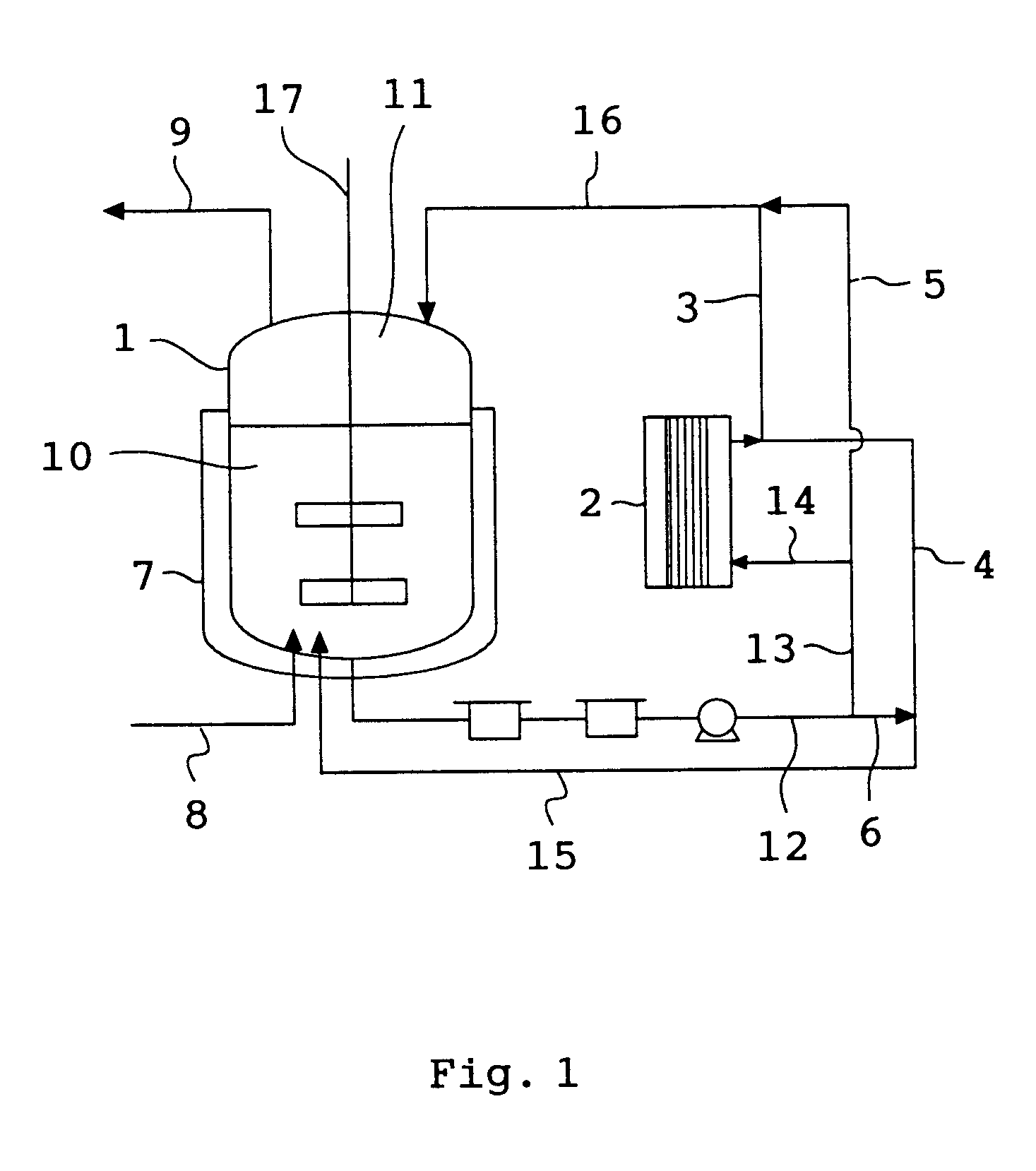Production process of polymerized toner
a production process and technology of toner, applied in the field of polymerized toner production process, can solve the problems of difficult removal of difficult to completely react polymerizable monomer in the polymerization step for forming binder resin, and difficult to remove residual unreacted polymerizable monomer, etc., to prevent offensive odor, improve environmental safety, and reduce the influence of odor on the environmen
- Summary
- Abstract
- Description
- Claims
- Application Information
AI Technical Summary
Benefits of technology
Problems solved by technology
Method used
Image
Examples
example 1
1. Preparation Step of Polymerizable Monomer Composition for Core
A polymerizable monomer mixture (Tg of the copolymer obtained by copolymerization=55.degree. C.) for core composed of 80.5 parts of styrene and 19.5 parts of n-butyl acrylate, 0.3 parts of a polymethacrylic ester macromonomer ("AA6", trade name; Tg: 94.degree. C.; product of Toagosei Chemical Industry Co., Ltd.), 0.5 parts of divinylbenzene, 1.2 parts of t-dodecylmercaptan, 7 parts of carbon black ("#25B", trade name; product of Mitsubishi Kagaku Co., Ltd.), 1 part of a charge control agent ("Spiron Black TRH", trade name; product of Hodogaya Chemical Co., Ltd.) and 2 parts of a parting agent ("Paraflint H1", trade name; Fischer-Tropsch wax produced by Sutherl Co.; endothermic peak temperature=100.degree. C.) were subjected to wet grinding by means of a media type wet grinding machine to prepare a polymerizable monomer composition for core.
2. Preparation Step of Aqueous Dispersion Medium
An aqueous solution with 6.2 par...
examples 2 to 4
Polymerized toners and non-magnetic one-component developers were produced in the same manner as in Example 1 except that the temperature (temperature of the liquid phase returned) of the aqueous dispersion circulated from the external heat exchanger within the evaporator through the heated liquid phase-circulating line 4, the temperature (temperature of the vapor phase returned) of the aqueous dispersion circulated through the heated vapor phase-circulating line 3, the circulating ratio of the liquid phase to the vapor phase, the quantity of heat supplied, the pressure within the evaporator, and the treatment time of the stripping under reduced pressure were preset as shown in Table 1. The results are shown in Table 1.
example 5
An aqueous dispersion containing polymer particles formed was prepared in the same manner as in Steps 1 to 5 of Example 1.
(I) Stripping Step Under Reduced Pressure
An evaporator 1 equipped with a stirrer 17 as illustrated in FIG. 1 was charged with the aqueous dispersion of the polymer particles obtained above. While stirring the aqueous dispersion, it was circulated between the evaporator 1 and a plate type external heat exchanger 2. The aqueous dispersion taken out of the evaporator 1 was heated in the external heat exchanger 2 to heat a water phase 10 to 70.degree. C.
Thereafter, the pressure within the evaporator was reduced to 39 kPa in terms of absolute pressure (-62 kPa in terms of gauge pressure). Further, the aqueous dispersion taken out of the evaporator 1 was heated in the external heat exchanger 2, and the heated aqueous dispersion was circulated to the liquid phase 10 in the evaporator 1, and at the same time steam was supplied into the liquid phase 10 through the gas-blo...
PUM
| Property | Measurement | Unit |
|---|---|---|
| temperature | aaaaa | aaaaa |
| temperature | aaaaa | aaaaa |
| absolute pressure | aaaaa | aaaaa |
Abstract
Description
Claims
Application Information
 Login to View More
Login to View More - R&D
- Intellectual Property
- Life Sciences
- Materials
- Tech Scout
- Unparalleled Data Quality
- Higher Quality Content
- 60% Fewer Hallucinations
Browse by: Latest US Patents, China's latest patents, Technical Efficacy Thesaurus, Application Domain, Technology Topic, Popular Technical Reports.
© 2025 PatSnap. All rights reserved.Legal|Privacy policy|Modern Slavery Act Transparency Statement|Sitemap|About US| Contact US: help@patsnap.com

